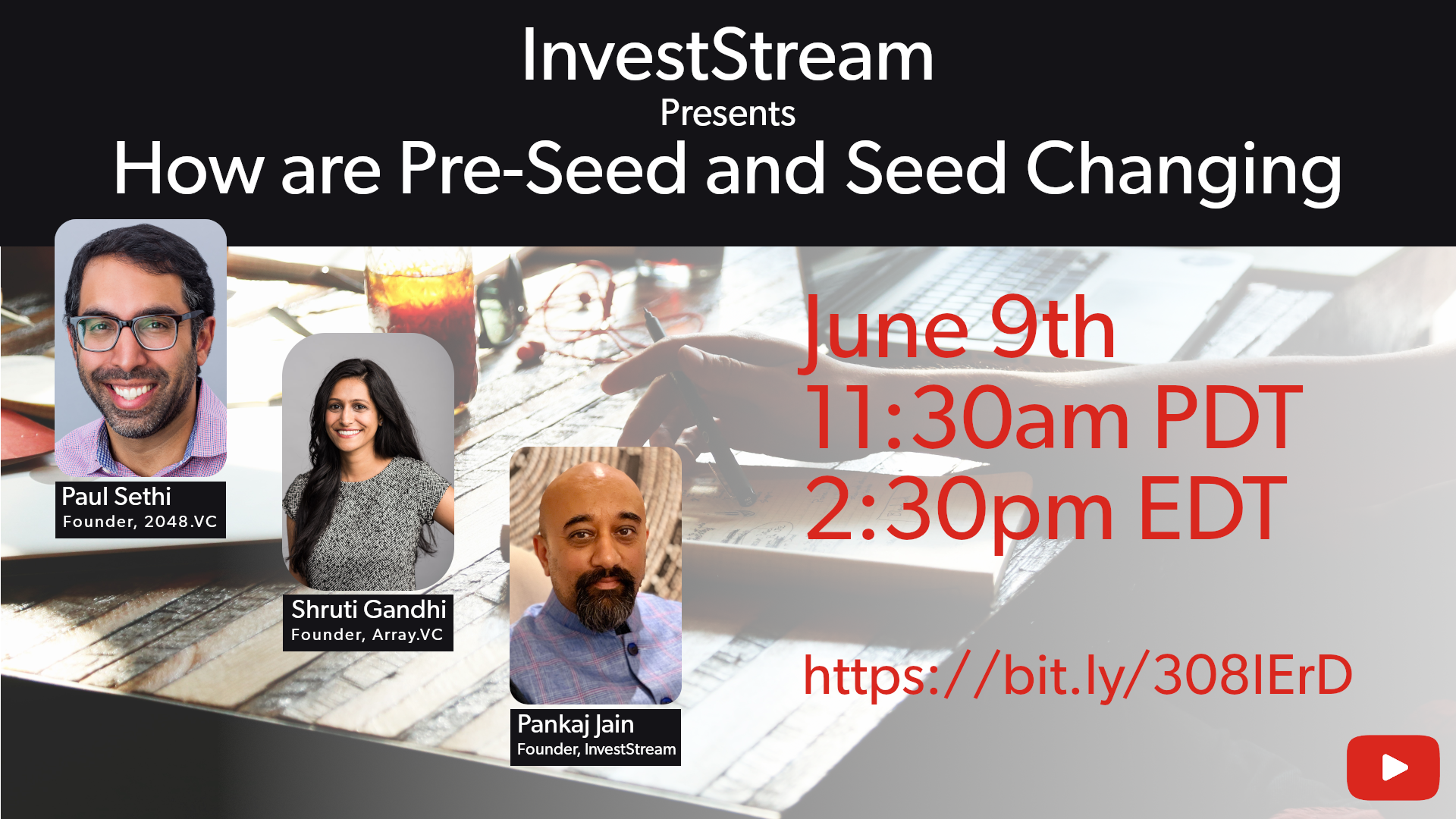Tag: Investing
-
Doing due diligence on startups
Due diligence is the process of researching and analyzing a potential investment before making a decision. The process can include reviewing financial documents, assessing market trends, evaluating management teams and a lot more. Essentially, due diligence is all about doing your homework to make an informed investment decision. When it comes to investing in startups…
-
The Rise of Indian Venture Capital
Over the last twenty years, India has seen a tremendous amount of economic activity in the tech arena. The startup and venture capital ecosystems were a bit slow to pick-up, partly due to low Internet penetration until just a few years ago. That, however, didn’t prevent the creation of unicorns like Flipkart, Snapdeal and others.…
-

How are Pre-Seed and Seed Changing in 2020?
A lot is changing in the startup world. Even before getting hit with COVID-19, the definitions of pre-seed, seed, post-seed/pre-series A were changing at a fast clip. Many early-stage VCs were moving downstream, writing larger checks and investing in later rounds. At the same time, larger, late-stage VCs were either ramping up their scout programs…
-
What is “Carry†or “Carried Interest�
Venture Capital can be complex and in this episode of InvestStream, I explain “carried interest†or “carry†as it’s more commonly known and why it’s important for VCs. Carry is discussed often amongst Venture Capitalists and other Private Equity investors but rarely amongst founders of startups. Politicians have talked about how carried interest should be…
-
Proto.in July 2008 Reflections
Proto.in is an event very similar to DEMO held in the US. The basic premise is to help startups gain visibility by being able to showcase their prototypes or products in front of other startups and potential investors. Proto.in has been held in Chennai since its inception in January 2007, however, this summer, they decided…